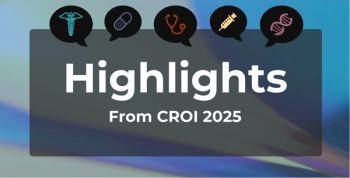
Using Telemedicine for Respiratory Infections May Lead to More Care Later
The study, on the quality of on-demand video telemedicine services, found that patients using telemedicine for respiratory infections were more likely to receive follow-up care, causing higher health care spending.
Patients with acute
“Looking forward, it will be important for researchers and payers to more closely examine the reasons for the additional downstream health care use associated with direct-to-consumer telemedicine visits and to compare outcomes after scheduled virtual visits with a patient’s primary care provider,” wrote the investigators.
The study,
Prior to the pandemic, primarily employer-based insurance providers and some Medicare Advantage plans covered direct-to-consumer telemedicine, whereas these services were not eligible for coverage under fee-for-service Medicare plans.
“Policy makers at the state and federal levels must start thinking now about how telemedicine policy can maximize access to care while minimizing redundant or excess care after the public health emergency ends,” said the authors.
Direct-to-consumer telemedicine refers to a live, video-based physician encounter used to address minor medical issues, such as acute respiratory infection. The physician often has no prior relationship with the patient or does not have access to the patient’s medical records. Acute respiratory infection is one of the most common reasons patients seek care outside of traditional, scheduled face-to-face visits.
Although direct-to-consumer telemedicine is considered a cost-efficient, convenient alternative to in-person visits at hospitals or urgent care centers, previous studies have shown that only 12% of users accounted for patients using it as a substitution for higher-cost care and 88% were new utilizations, leading to increased costs.
For the study, the investigators collected insurance claims data from Blue Cross Blue Shield of Michigan and identified patients who had a direct-to-consumer telemedicine visit or received in-person care for acute respiratory infection during 2016 through 2019.
An episode of care was defined as the 7-day window after the first telemedicine visit and each patient with an episode of care was matched with 2 control patients who received an in-person visit.
Among beneficiaries, there were 80,585 total direct-to-consumer telemedicine visits during the study period, with the volume increasing annually. The investigators analyzed 86,143 index visits for acute respiratory infection, of which 28,716 were for telemedicine visits and 57,427 were for in-person visits.
Compared with the matched controls, episodes of care for patients who used telemedicine were more likely to obtain follow-up care (5.9% vs 10.3%; P < .01).
Telemedicine visits had slightly but significantly less downstream emergency department visits (0.5% vs 0.6%). However, after a telemedicine visit, patients were more likely to experience downstream events, including secondary office or urgent care visits, which add additional costs.
The investigators identified several study limitations, including that the data stemmed from 1 commercial insurer in 1 state, claims may not have accounted for phone calls and other forms of unbilled health care, and the study only focused on 1 type of telemedicine encounter.
Study limitations made the investigators unable to determine whether related visits after a direct-to-consumer telemedicine visit was the result of inadequate care, appropriate triaging, or physician recommendation.
“Future research addressing these issues will be important to inform policy makers, providers, and payers about the value of direct-to-consumer telemedicine,” said the investigators.
Reference
Li KY, Zhu Z, Ng S, Ellimoottil C. Direct-to-consumer telemedicine visits for acute respiratory infections linked to more downstream visits. Health Aff (Millwood). 2021;40(4):596-602. doi: 10.1377/hlthaff.2020.01741
Newsletter
Stay ahead of policy, cost, and value—subscribe to AJMC for expert insights at the intersection of clinical care and health economics.









































